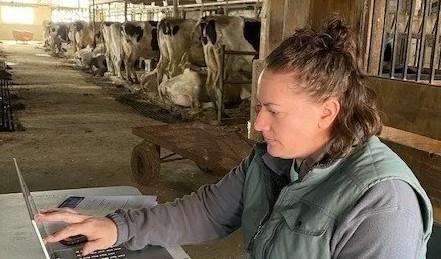By Samantha Gehrett

Samantha Gehrett
Spring planting has come and gone. The corn, beans and next cutting of hay are all growing. We’re entering a hurry up and wait period. Just as the corn is taking the time to grow, it’s important, you take the time to look at how your business is growing or maintaining for the year. A mid-year financial checkup is an opportunity to review the progress you've made toward goals set at the start of the year and make plans for the remaining months of the year.
Surprisingly or not, this mid-year financial check-up is often neglected. Yet, reviewing the past six months’ worth of activity can do wonders for achieving your financial aspirations by year-end. If uncertain what to look for, start by analyzing the financial goals set earlier in the year, and focusing on each major aspect of your financial plan.
Update Your Books
Experienced business owners know that accounting and financial reviews should take place monthly. While a mid-year check-up is an excellent opportunity to evaluate how your operation is doing and adjust for the remainder of the year, the strongest producers have more frequent access to updated numbers and data.
If you do not yet have a system in place or find that you continue to fall behind on monthly reporting, consider scheduling some additional time with your accountant.
Business Goals
Your business goals are more than items on a list. They are a glimpse of the phase your business was in when you set them. As such, they might need modifications from time to time. And your mid-year review is the ideal time to assess that. Businesses change and evolve, for different reasons.
Consider the following:
- Are your initial goals still appropriate?
- What have you achieved so far?
- Any achievements missed? Why?
- Any new needs that should have a new goal?
Strategies and Methods
Next, focus on your strategies and methods. What is working well, and what isn’t? Organization should be a key factor in your business management toolbox. This should not just happen at tax time but throughout the year. It helps prevent losing a receipt or forgetting to pay a bill on time. Organizing can be viewed as the activities to collect and configure resources to implement plans in a highly effective and efficient fashion. Organizing is a broad set of activities, and often considered one of the major functions of management.
Making sure you have all the income, expense, asset, and liability information ready and in an organized format, will make the often-dreaded meeting with your accountant bearable for all involved. Utilizing tools such as Penn State Extension’s Farm Account book can be the first step to help manage your farm’s critical business records. The farm account book can be purchased online or at your local Extension office. There are also computer software programs available such as Quicken® or QuickBooks®. The Penn State Dairy Business Management team can assist in the set-up for these programs.
Cash Flow and Budget(s)
Regardless of your specific business and situation, there are some important points you need to consider:
- Any outstanding payable issues that need attention?
- Are you on track to meet your target income?
- Are your expenses being managed properly?
- Is it time to raise your rates?
If you are struggling, consider reducing your business expenses, revamping your offerings or adjusting your marketing activities.
Review Your Financial Statements
Running a business can be stressful. During a profitable year, there never seem to be enough hours in a day. Challenging years have the possibility to induce financial concern. Regardless of your operation’s performance, a mid-year check-up helps you understand how profitable you are, whether you can take on more debt, and how healthy your cash flow is.
To properly assess your farm's health, you’ll need access to your year-to-date income, balance sheet, and cash flow statement. Here is a brief recap of what each document entails:
Income Statement – Much like a report card, your income statement indicates how your operation performs over a specific time by calculating revenues, expenses, and net profit or loss.
Balance Sheet – Producers also need access to their organization’s financial performance on a specific date. They can locate this information on a balance sheet, which includes assets, liability, and equity.
Cash Flow Statement – Every farm needs cash. Cash flow statements help producers understand where money is coming and going. Cash flow includes outgoing money like the cost of operations and working capital and incoming cash from sales or contracts.
An important reminder is that cash flow does not just mean the amount of money coming in and out. It refers to the timing of how money flows. For example, if you do not pay your invoices until after your loans are due, cash flow could become a concern.
In closing, a mid-year financial review should be on your summer to do list once the spring rush is done. The mid-year check-up is an excellent opportunity to evaluate how your operation is doing and adjust for the remainder of the year. The Penn State Dairy Business Management team can assist you in some of those critical business management needs. It is crucial to stay organized and have a team of professionals in your corner to help your business succeed.
Source : psu.edu